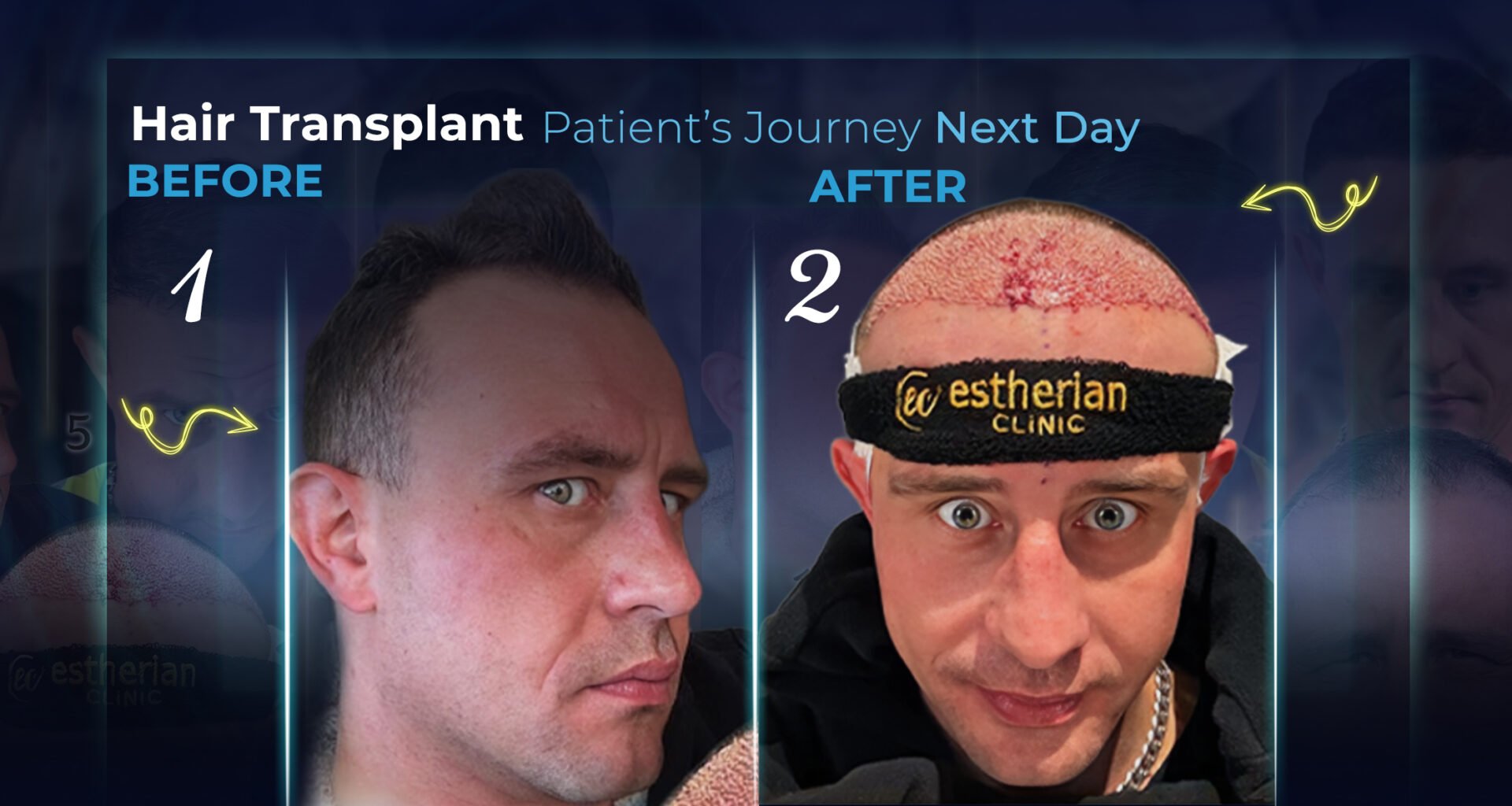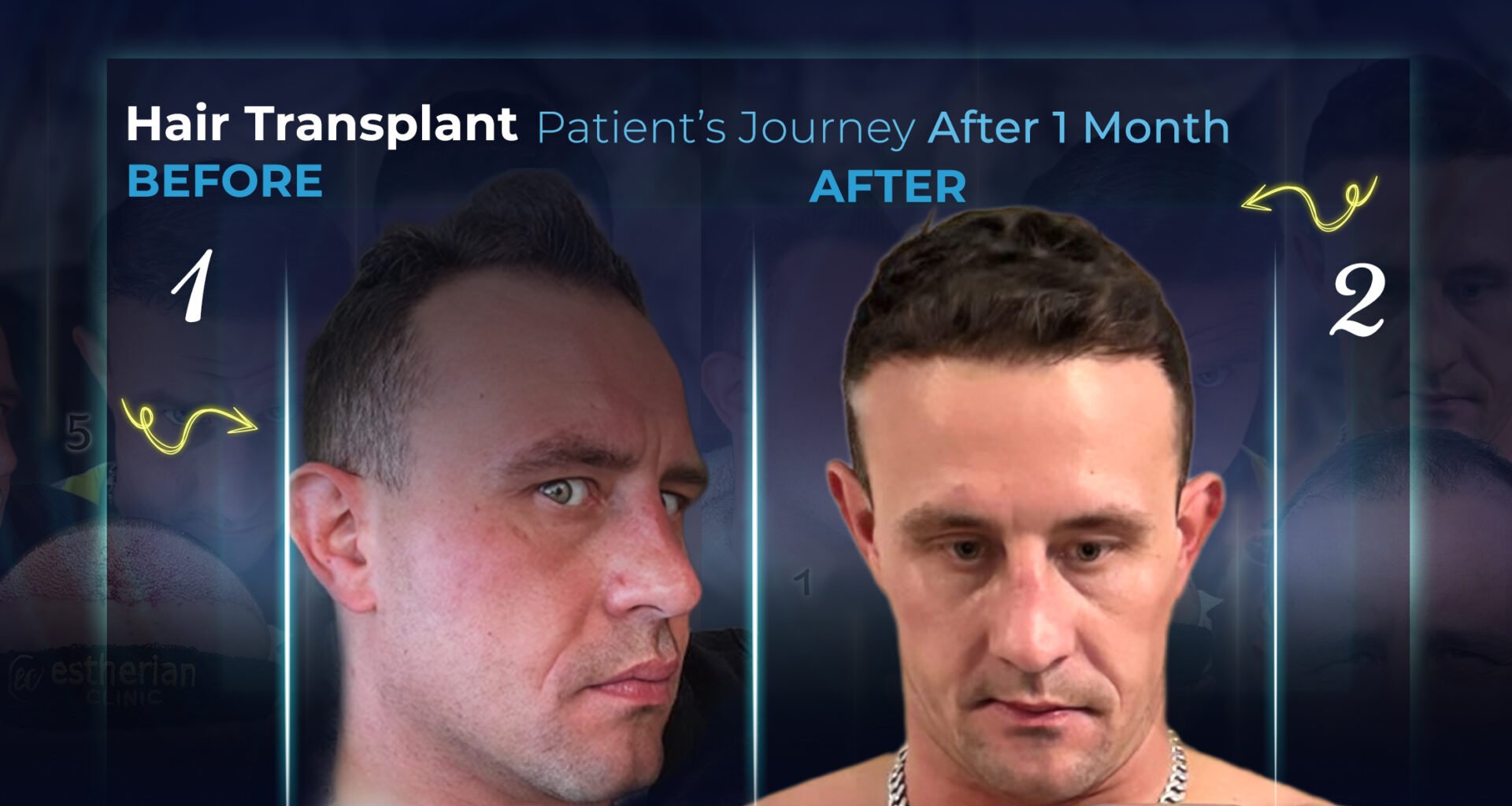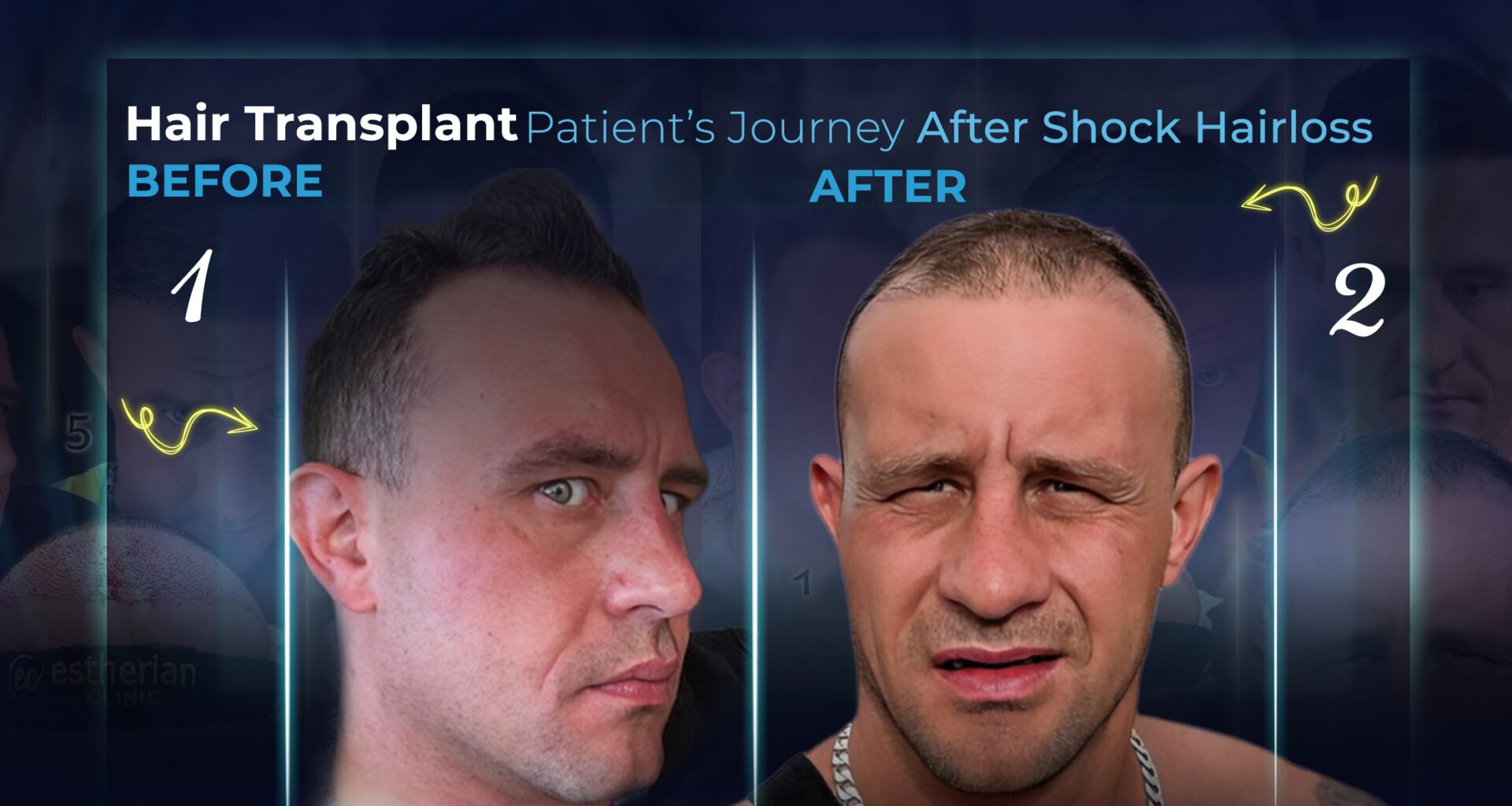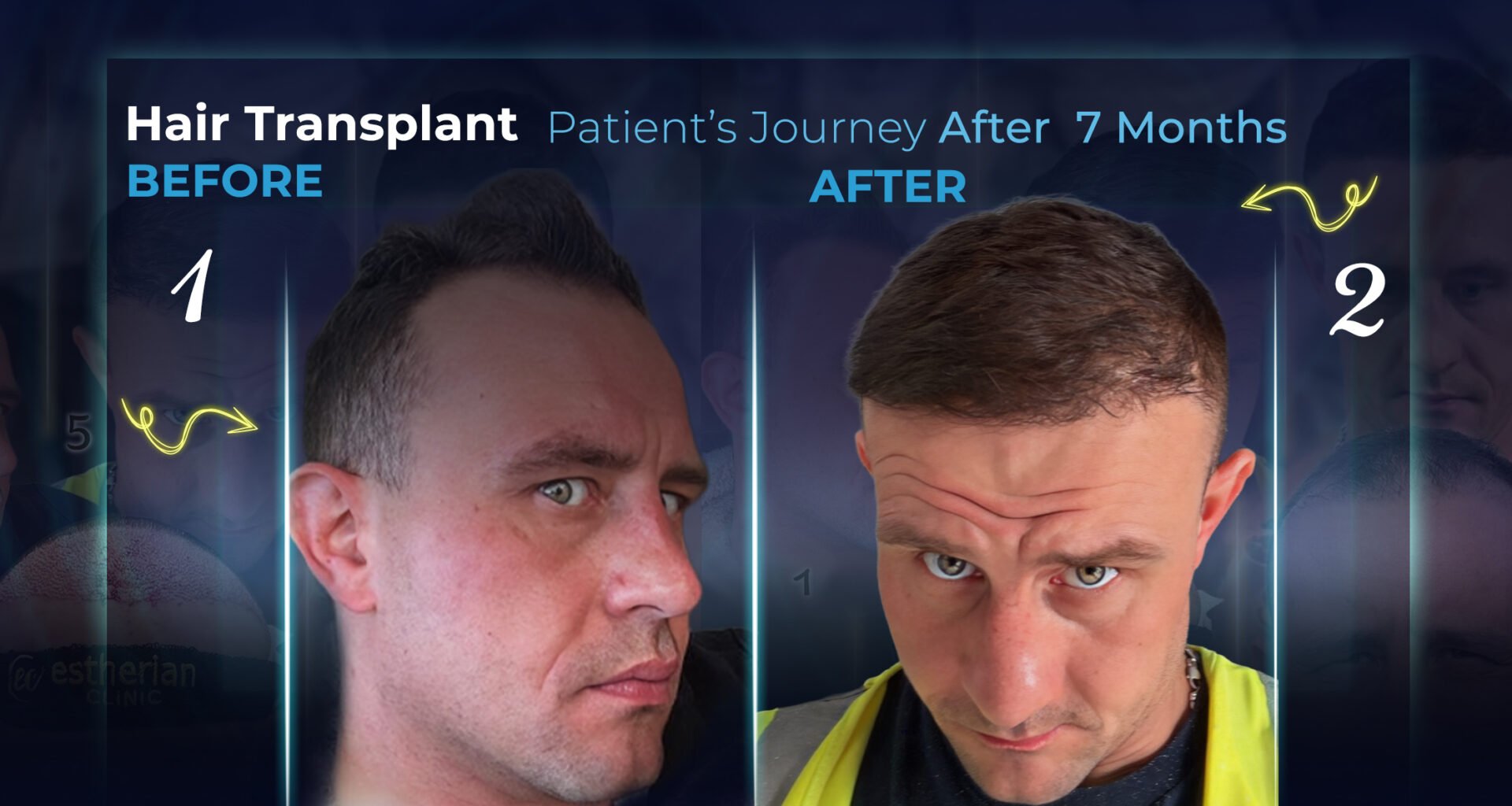Hair transplants have become the go-to solution to help tackle male-pattern baldness. Whether it is thinning in the hairline or complete baldness, there are hair transplant techniques that address different types of hair loss. At the Estherian Clinic, we have countless patients who leave our clinic feeling satisfied with their transplant and experience a renewed confidence in their new look. This is largely due to our comprehensive approach to using the latest techniques and tools to create treatment plans that address our patients’ every need. Today’s blog is a case study on one of our male patients who had significant hair loss and wanted to restore their hair’s thickness and feel more confident again. Let’s jump right in!

👨🦱 Patient Profile
Our patient had significant male-pattern hair loss, especially in the frontal region, which had caused a receded hairline. While there was considerable baldness in the frontal area, the hair quality was excellent, and the density in the donor area was ideal.
| Grafts | 3850 grafts |
| Technique | Sapphire Fue Hair Transplant |
| Hair Type | Straight |
⚕️ The Ultimate Goal
The ultimate goal was to fill up the baldness in the front of the head and create a full hairline that blends naturally with the patient’s face.

💉 Hair Transplant Technique Used
Since the hair quality was good enough and the hair density in the donor area was sufficient, our experts chose the Sapphire FUE hair transplant technique. About 3850 grats were transplanted in the bald areas and placed with precision to offer both fullness and results that are seamlessly natural-looking. Let’s have a more detailed look at the Sapphire FUE hair transplant technique:
What is the Sapphire FUE Hair Transplant Technique?
The main reason this technique is called the Sapphire FUE transplant method because it uses Sapphire microblades. Unlike the conventional steel blades, the sapphire microblades are a lot sharper, which helps with the creation of V-shaped micro channels for transplantation. This method is very gentle and, therefore, allows for less scarring.
Since these blades are thinner, they allow for enhanced precision for the transplantation. Their durability also allows them to stay sharp during the procedure. This precision makes it easy for the surgeon to transplant the hair follicles strategically to look as natural as possible. The incisions made with the sapphire blades are tiny, which is why they heal much faster. So, no extended downtime is needed after the procedure. Not to mention, the surgeon can also use this technique to transplant the follicle closer to ensure the final result involves thicker and denser hair.

Steps of the Sapphire FUE Hair Transplant Technique
- The first step is a consultation with your doctor. During this stage, the doctor will need a comprehensive health report. This will include blood tests to ensure the patient has no pre-existing illnesses. Moreover, the doctor will ask you about any medication, vitamins, or other treatments you might be using.
- Next, the doctor will design the new hairline to ensure the final results are natural and suit the patient’s features.
- The day of the surgery involves the doctor using local anesthesia to make the procedure comfortable and painless for the patient.
- Once the scalp area is numbed, the doctor will use the sapphire microblade to collect from the donor area (typically the back of the scalp) and then transplant them to the recipient area. The recipient site is the area that has hair thinning or balding. For the transplantation, the doctor will use the sapphire blade to create V-shaped channels in the recipient site.
- Next, the grafts are transplanted into these channels.
📌 The whole procedure can take about 6 to 8 hours to complete. This is because grafts are collected and then transplanted one by one.

Our Patient’s Recovery Timeline
The very next day after the Sapphire FUE Hair Transplant procedure, the patient had a lot of redness on their scalp with some scabbing as well. Moreover, the scalp is usually really sore around this time. The doctor usually prescribes painkillers to ease the discomfort and recommends that the patient take plenty of rest.
Between months 1 to 3 is a crucial time. Our patient experienced shock hair loss. This is the dormant phase for the hair, where there isn’t any visible growth. The main cause of this is the trauma that occurred as a result of the surgery. In a way, the scalp is adapting to the transplant while the hair follicles are getting ready to enter the growth phase.
Months 3 to 6 involve the growth of the hair, and while the growth might be uneven, the thickness gradually increases.
6 months post-transplant, the patient will be able to see drastic results. Our patient’s 7-month progress photo shows a substantial increase in hair density.
📌 One thing to note is that the Sapphire FUE Hair Transplant takes 12 months for the patients to see the full extent of the hair growth and the maximum increase in density.

✨ Final Results
The final results of our patient’s advanced Sapphire FUE Hair Transplant show a drastic difference between the before-and-after photos. There is a considerable improvement in the hair thickness. The scalp is completely covered with thick and dense hair due to successful growth. Furthermore, the hairline has been restored and has rejuvenated their appearance, resulting in them looking more youthful and confident.













